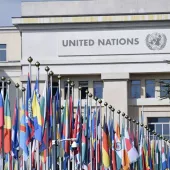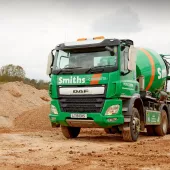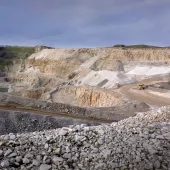Silicosis Fears and the Planning Challenge: Addressing the public’s concerns
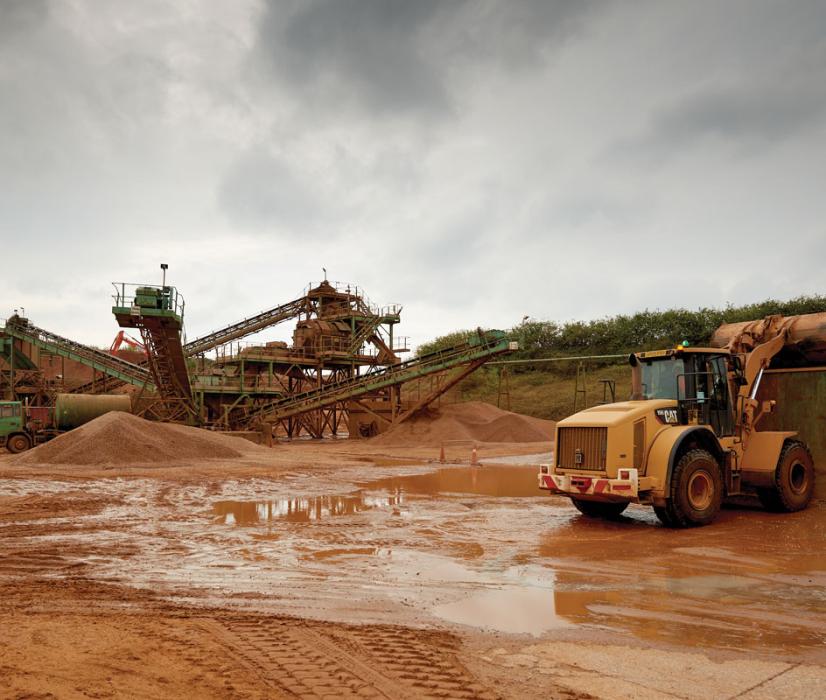
First published in the October 2023 issue of Quarry Management
Ray Chambers of Smiths Concrete, a joint venture with Hanson UK, looks at the challenges associated with allaying public health concerns and outlines how operators can provide neighbours with robust information on quarry-related dust
Quarries have transformed over the last 30 years with potential dust hazards well managed through the planning and permitting process to prevent risk to host communities and staff. However, public concerns about air quality arising from quarry dust emissions are increasingly impacting relationships between operators and host communities, and have even influenced planning application outcomes, despite the absence of any credible risk to health.
Background
The minerals sector has done a great job of managing the occupational health risks associated with airborne dust, especially that of respirable crystalline silica (RCS).
Although efforts were made to manage these risks before the 1988 COSHH Regulations, their introduction represented a turning point and since then we have seen the implementation of workplace monitoring, dust-reduction programmes, plus workplace educational initiatives supported by health surveillance, to minimize the potential risk from dust and RCS to employees. An unforeseen consequence of this is that there is a considerable amount of information available on the occupational risk of silicosis, but a dearth of information about the public health risks to communities close to sites.
This lack of public health information, combined with misinformation available online, can lead to members of the public, unwittingly, misinterpreting information and applying the occupational risk at high-concentration sources inside the site to a public health scenario beyond the quarry gates. This has the potential to create alarm in host communities, especially among those who have no experience of the quarrying sector and so are unaware of how hazards are addressed through the UK’s regulatory process.
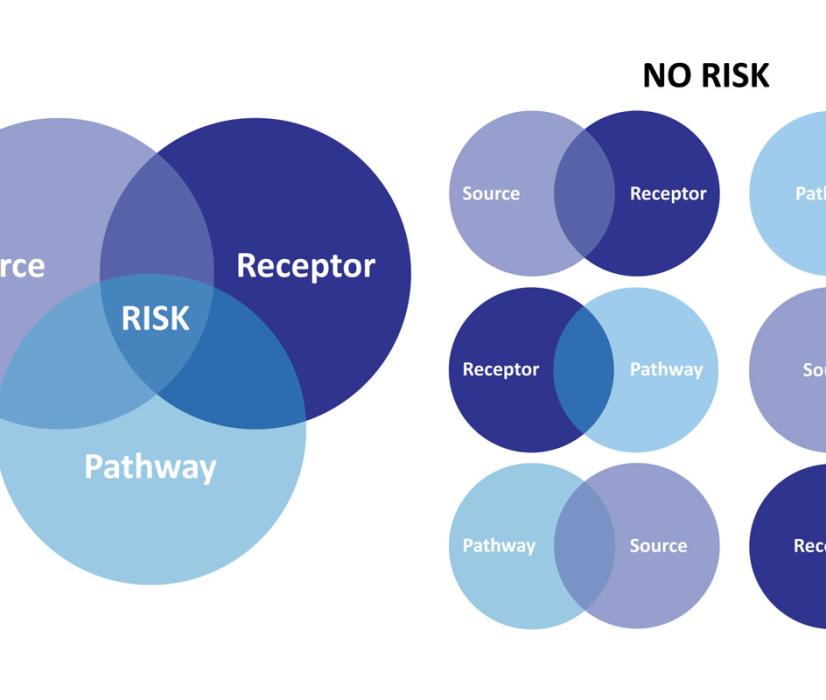
The difference between hazard and risk?
Misunderstanding the difference between hazard and risk is a common factor when it comes to public health concerns. But as anyone who has undertaken health and safety training will know, in its simplest form, a hazard is any agent with the potential to cause harm, and a risk is the likelihood of harm occurring. A hazard, by itself, does not constitute a risk; it is only when there is a hazard source, a receptor (ie a person or population) and a pathway of exposure connecting the two that there is any potential health risk.
Community concerns tend to arise when the source-pathway-receptor concept is either ignored, or misapplied to assume a risk, where there may be no potential of there being one. For example, communities may infer a risk when a source and a receptor are present – even if no credible pathway of exposure exists.
For instance, there is often significant concern for particulate matter (PM2.5) and RCS exposure from aggregate activities, where both a hazard and receptor may be present. However, the process and aggregate are wet and wider sites are further managed through dust suppression, so there is no credible exposure pathway, and therefore no significant risk to health. Nevertheless, not being familiar with the extensive mitigation approaches in place, communities can inadvertently link hazard with risk. If left unaddressed, this can create needless stress, anxiety and fear, which, in turn, can lead to incorrect or unsubstantiated planning decisions.
Bengeo concerns
Andy Price of Sibelco’s presentation to the MPA in 2019 was key in setting out the importance of ‘air quality beyond site boundaries’. It was timely too, coming soon after the Bengeo planning appeal decision, in which a refusal for a proposed quarry in Hertfordshire was upheld, in part, because of the ‘perception’ of health risks from dust generated by the site.
To be clear, the decision to uphold the refusal was not only about the perception of air quality concerns. Other considerations were referenced in the decision letter to the appellant, including that sections of the proposed site were not in the area identified for mineral extraction. Importantly though, the body of the planning inspector’s report refers to the concerns of the local community about the impact on their health of fine particulate matter and RCS. This was unusual, as while fear can be a material consideration, it is typically only where substantiated by objective information that demonstrates a significant risk. While the combination of grounds for refusal for Bengeo mean it is unclear what weight this perception was given in the final decision, it does reinforce that compliance with objective thresholds protective of health is not enough.
How well founded are communities’ fears?
A key point is under what circumstances RCS is more likely to be generated. Obviously, silica must be present in the mineral being processed. No silica = no credible hazard and no silicosis.
In addition to silica being present in the parent rock, it has to be processed in a manner which creates crystalline silica in a respirable form sufficient to cause harm. Typically, this would mean high-energy input into the raw material, proximity of an individual to the point of dust generation, and enclosure of the working area. Such situations include silica flour mills, foundries and stonemasonry work. A more recent hazard has arisen from the uptake in resin bound ‘granite’ worktops and sanitary ware, which involve the use of fine, dried and graded quartz powders in their manufacture, followed by the sawing of the finished product with associated dust creation in the users’ home or office.
These scenarios represent a far more significant hazard of RCS concentration and exposure than may occur in a modern hard rock quarry with a dry aggregate crushing and screening plant, which themselves are considered within the aggregates industry, and by legislation, as higher risk than Smith’s proposed sand and gravel operation. Indeed, the ‘wet’ process plant used for sand and gravel washing and screening limits the potential for pollution creation to such an extent as to be considered ‘trivial’ under LAPPC regulation.
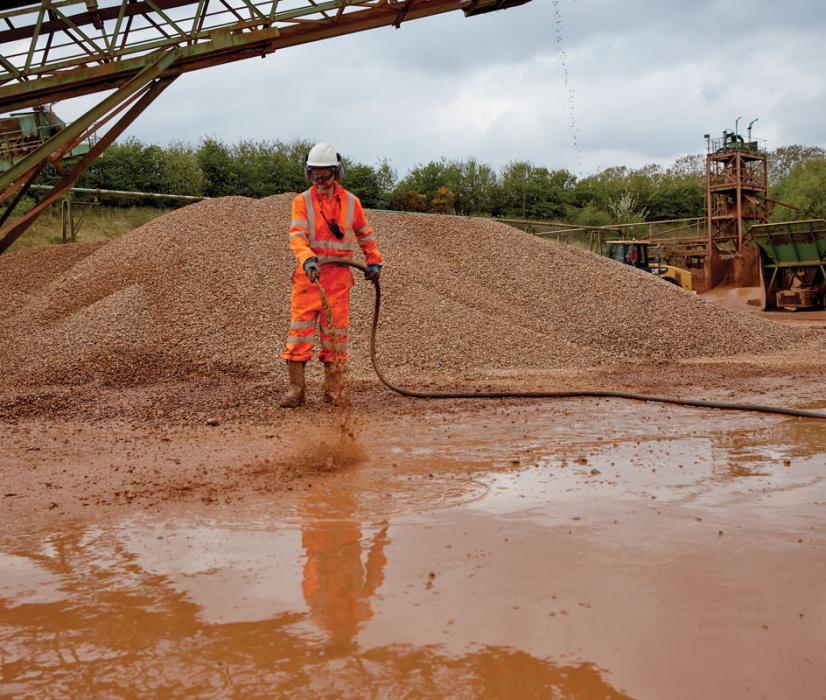
What can be done to address ‘fear’ of the development?
Smiths’ proposals for a new sand and gravel pit with a washing plant have resulted in some host community members expressing their fear of the risk of silicosis. As a responsible operator we have done all we can to communicate where the hazards lie and what we propose to do to eliminate exposure at source, such that there is no significant risk. This included monitoring both the greenfield site and the company’s operational site a few miles away, with the assessment showing that the operational site generated less PM10 and about the same PM2.5 as the site’s current use, which is arable land.
Of course, tackling fear is a tricky proposition. This is especially so where objectors’ opinions may be wholly unsubstantiated, derive from activities on different continents with different pollution control regimes and with no bearing to our project, and/or can even be contrary to the weight of scientific evidence. Health is a complex, multidisciplinary and emotive topic, and operators’ need to be mindful that their responses are not perceived as ‘gaslighting’ or belittling the communities’ concern.
We believe the only way to address fear is through the investigation and dissemination of robust information. This starts with community and stakeholder engagement but can also inform the supporting information accompanying a planning application, which in turn can be fed back into ongoing dialogue with the community in an appropriate way. Failure to act could mean that, while a project meets all regulatory requirements for technical specialists and statutory consultees, it may miss the mark in addressing community concerns.
In our situation, we have explored all health concerns raised through engagement within the Population and Health chapter of the Environmental Statement that accompanies the planning application. This draws on both the supporting technical disciplines and our comprehensive communication and engagement strategy. The aim is to demonstrate compliance with all regulatory requirements set to be protective of health, as well as showing how residual concerns among some concerned members of the public have been addressed.
Steps taken included carrying out air quality monitoring and assessments, engaging recognized public health experts to evaluate the hazard and the risks it poses, employing a PR company to help us communicate such matters, making a short video of our proposals and hosting it on our website, regular website updates of our proposals, community ‘facts and myth busting’ pamphlets, and a pre-application public exhibition with our public health experts on hand to answer attendees’ questions. In addition, we have hosted site visits by parish and ward councillors and near neighbours so that they can see that we are not going about our daily work in hazmat suits and gas masks.
Conclusion
The level of community concerns can depend on the types of mineral being worked and the processes involved, but since Bengeo the perception of health risks has become a regular feature in mineral planning applications.
We are yet to see whether our approach at our proposed new sand and gravel quarry will prove effective at committee stage, but we have received helpful feedback from the UK Health Security Agency (UKHSA, formerly Public Health England) in addressing what the reasonable perception should be, stating that: ‘We know that sand and gravel quarries have the potential to generate dust emissions. However, having reviewed the assessment, we are in agreement with the conclusions. Operating a well-managed and maintained site, as described in the report, impacts from this site on air quality are anticipated to be negligible’.
The recent Craig-Yr-Hesg decision to extend the quarry’s working life also clarified that perception has to be based on reasonable grounds. This stated that: ‘I agree with the Council that public perceptions of harm can be a material consideration. However, as set out by the appellant, the weight to be attached to such submissions in the planning balance should be determined by the extent of the evidence advanced on that particular issue, which is a matter of planning judgement’.
There is no doubt that the public’s perception of the risks associated with quarry dust, and the possible impacts on public health, will be an ongoing issue. Our sector needs to investigate such concerns proactively and not shy away from engaging with communities to avoid any residual public concerns from festering. This should help to prevent planners (and inspectors) from making poor decisions.
Helping change perceptions
Our research highlighted some interesting facts that we thought were worth sharing:
Cooking is a major source of indoor air pollution, with frying and grilling resulting in particularly high PM2.5 concentrations – 92 times the levels identified with our proposed development.
Candle burning is another source of indoor air pollution. PM2.5 concentration increases with the duration of candle burning, with the average maximum concentration reaching between 376µg/m3 and 552µg/m3. Again, this is a far more significant exposure scenario, between 46 and 68 times higher than that associated with our proposed development.
Subscribe to Quarry Management, the monthly journal for the mineral products industry, to read articles before they appear on Agg-Net.com



